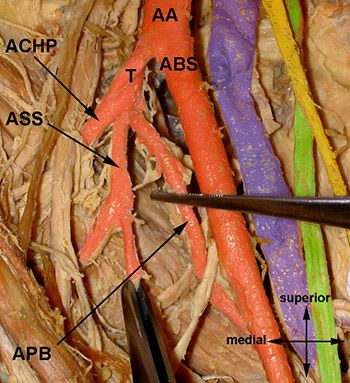Upper limb principal arteries variations: A cadaveric study with terminological implication
DOI:
https://doi.org/10.17305/bjbms.2020.4643Keywords:
Anatomical variant, anatomical variation, axillary artery, brachial artery, radial artery, ulnar artery, anatomical terminology, anatomical nomenclatureAbstract
Although the variability of the upper limb arteries is a clinically important problem, the prevalence is varying across the existing studies and classification is rather complicated, not well established and sometimes even unclear for simple and direct understanding and usage. Multiple case reports appearing in the last years apply incorrect, inappropriate, and sometimes misleading terminology. We performed an anatomical cadaveric study of the variability of the arteries of the upper limb, namely, the axilla, arm, and forearm, in 423 upper limbs embalmed with classical formaldehyde method (Central European population). We proposed to apply the Equality system based on the common trunks for denomination of the axillary artery branches principal variations: Truncus subscapulocircumflexus (22.9%), truncus profundocircumflexus (13.75%), and truncus bicircumflexus (13.95%). Further, we proposed the terminology system developed by Rodríguez-Niedenführ et al. for the free upper limb principal arterial trunk variations based on the origin, location (in the arm only, or in the arm and forearm), and course (related to the forearm flexor muscles) of the involved artery: Arteria brachialis superficialis (9.5%), arteria brachioradialis superficialis (6.4%), arteria brachioulnaris superficialis (1.9%), arteria brachiomediana superficialis (0.5%), and arteria comitans nervi mediani manus (3.3%). Extensive development of the catheterization methods via the arteria radialis et ulnaris as well as surgical procedures using flaps based on perforating branches of these arteries (including arteria brachioradialis superficialis et brachioulnaris superficialis) necessitate thorough data on prevalence of the variant vessels for safe performance of these procedures to prevent any unexpected situations or to react adequately in such.
Citations
Downloads

Downloads
Additional Files
Published
How to Cite
Accepted 2020-04-04
Published 2020-11-02









